March-April 2009
Pulong ng Editor
GOOD FRIDAY: STATIONS OF THE CROSS
 The Stations of the Cross are a traditional Lenten prayer. The Presbyterian scripture scholar, Rev. William Barclay, helped me with the Stations. On TV he said, ‘We Protestants tend to pass over the Roman Catholic usage of Veronica and the three falls on the way to Calvary, because they are not in the Bible. But these scenes come from an ancient tradition, so let us treat them as we treat Bible scenes; namely, we ask ourselves: ‘What message does this scene have for me today?'
The Stations of the Cross are a traditional Lenten prayer. The Presbyterian scripture scholar, Rev. William Barclay, helped me with the Stations. On TV he said, ‘We Protestants tend to pass over the Roman Catholic usage of Veronica and the three falls on the way to Calvary, because they are not in the Bible. But these scenes come from an ancient tradition, so let us treat them as we treat Bible scenes; namely, we ask ourselves: ‘What message does this scene have for me today?'
THE AGONY AND THE ECSTASY
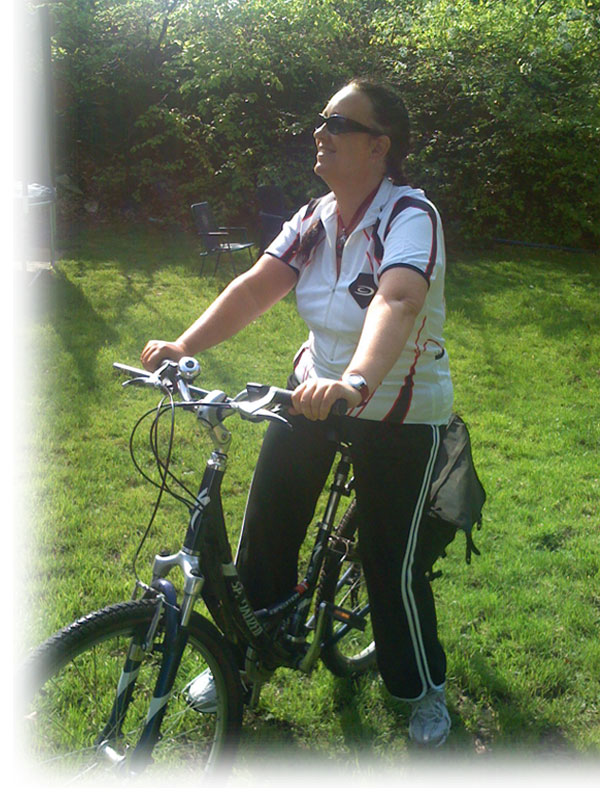 Mrs Jackie Parkes shares with us here how she has gone through depression and come through it. It was the very illness that brought her into agony that paved the way for a spiritual communion with God that made her feel the ecstasy and the glimpse of the promised heaven.
Mrs Jackie Parkes shares with us here how she has gone through depression and come through it. It was the very illness that brought her into agony that paved the way for a spiritual communion with God that made her feel the ecstasy and the glimpse of the promised heaven.
A Daughter’s View On Manic Depression
 Elizabeth Parkes, then 11 and now 14, the daughter of Jackie Parkes, wrote on how she helps her mom cope with manic depression.
Elizabeth Parkes, then 11 and now 14, the daughter of Jackie Parkes, wrote on how she helps her mom cope with manic depression.Where The Poor Get More Than Enough
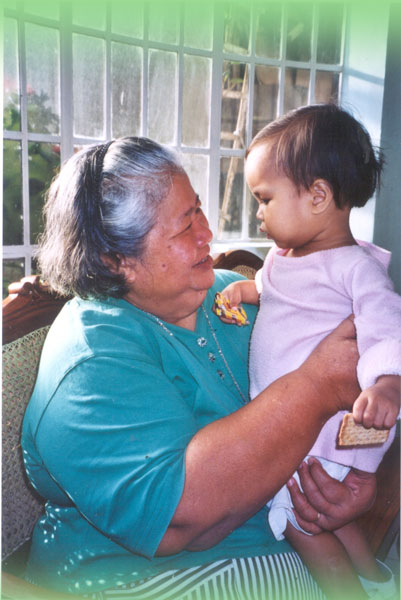 This is an interview with a social work student about the founder of the Daughters of St Augustine, putting emphasis on Fatima Center which she founded and that serves as a concrete example of fulfilling their mission.
This is an interview with a social work student about the founder of the Daughters of St Augustine, putting emphasis on Fatima Center which she founded and that serves as a concrete example of fulfilling their mission.
THE LITTLE WAY
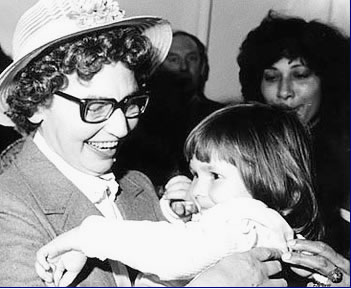 The article tells what Mary Doohan went through that led her to founding The Little Way Association and how her contribution to the Catholic Church in the name of mission has touched the lives of many.
The article tells what Mary Doohan went through that led her to founding The Little Way Association and how her contribution to the Catholic Church in the name of mission has touched the lives of many.
WHAT'S ON THEIR MIND
 The realities of mental health, specifically in Peru, is presented here. More than that is the effort and commitment of religious and lay groups to provide treatment and increase awareness about the importance of good mental health.
The realities of mental health, specifically in Peru, is presented here. More than that is the effort and commitment of religious and lay groups to provide treatment and increase awareness about the importance of good mental health.
WHO WILL CONSOLE CONSUELO?

Sister Angela, engaged in prison ministry tells us of an experience during one of her visits to a Chilean jail. She shares an encounter with Consuelo, a woman prisoner, who challenged her by venting all her anger towards God for the bitter life she had lived, leaving Sister Angela with the question: ‘who will console Consuelo? This presentation on the other hand also features a letter sent by Carlos who is grateful for the support given to the prisoners by Sister Angela that gives them hope for a brighter future.
Our Cover Story -- March-April 2009
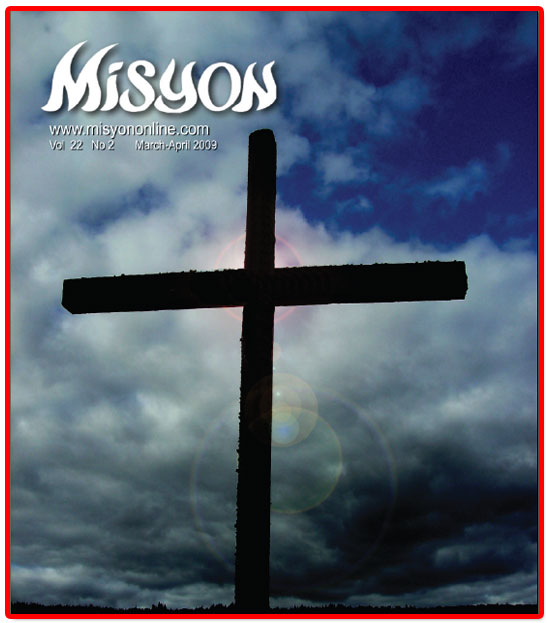
Our cover is a dark wooden cross with the sky as background – with which we associate heaven. Light emerges from the darkness behind the cross.
Presenting this picture to the class, ask the students what they can say about it. What does it symbolize? What are you reminded of?
Vocation Page -- March-April 2009

Thirty years ago, one Columban Missionary narrowly escaped death when his vehicle was fired on from ambush in the southern Philippines. He still lives and works among the poor. The life he has found far outweighed what others see as dangers and sacrifices. We invite you to join us in finding life as a Columban Missionary.
For more information contact:
Father Jude Genovia
St Columban's Mission
PO Box 4454, 1099 Manila
Tel: 02-400-4765 / 02-523-7332
Email: columbanfathers@yahoo.com
Website: www.columban.ph
A Daughter’s View On Manic Depression
By Elizabeth Parkes
Elizabeth Parkes, then 11 and now 14, the daughter of Jackie Parkes, wrote on how she helps her mom cope with manic depression.
LOST
As you read the book you will pick up some tips on how to cope with your parents who have a mental illness. Well, I am  11-years-old and have a mother who suffers from manic depression. Every now and then I give her some tips and targets that she should work up to. I say things like ‘When you keep up your good mood you have nearly emptied your drinking cup, but every time you keep a bad mood your glass fills up again.’ This gives her a big boost and helps her to feel a bit better. When you have a mental illness, plenty of rest is needed, so every couple of nights I give my mom a massage on her back, feet or head. All massages can tone your body and refresh your mind.
11-years-old and have a mother who suffers from manic depression. Every now and then I give her some tips and targets that she should work up to. I say things like ‘When you keep up your good mood you have nearly emptied your drinking cup, but every time you keep a bad mood your glass fills up again.’ This gives her a big boost and helps her to feel a bit better. When you have a mental illness, plenty of rest is needed, so every couple of nights I give my mom a massage on her back, feet or head. All massages can tone your body and refresh your mind.
Lots of questions in one day for a parent that has depression is not at all helpful, so what I advise is that you should be quiet around them and only ask questions that really need to be answered
Sometimes people with depression can occasionally get into bad moods, but the best thing you can do to help your parents is to help around the house and give them a massage. Being in a family of twelve with a mother who has depression can be tiring because I help my mom a lot, but I’d do anything for her to get well. During my mother’s illness I wrote some poems for her.
Many times I have felt upset and just horrible but I calm myself down and distract myself. Being around my mom a lot causes me to feel down, so getting away for a while is good for your health.
Elizabeth had this article published in several mental health resources. MIND has a fact sheet entitled ‘Young person’s introduction to mental health’.
Website www.mind.org.uk
Also check out www.youngminds.org.uk
Good Friday: Stations Of The Cross
By Fr Barry Cairns
Fr Barry Cairns, from New Zealand, was ordained in 1955 first went to Japan in 1956 and is still there. He has contributed many articles over the years to Columban magazines.
 The Stations of the Cross are a traditional Lenten prayer. The Presbyterian scripture scholar, Rev. William Barclay, helped me with the Stations. On TV he said, ‘We Protestants tend to pass over the Roman Catholic usage of Veronica and the three falls on the way to Calvary, because they are not in the Bible. But these scenes come from an ancient tradition, so let us treat them as we treat Bible scenes; namely, we ask ourselves: ‘What message does this scene have for me today?'
The Stations of the Cross are a traditional Lenten prayer. The Presbyterian scripture scholar, Rev. William Barclay, helped me with the Stations. On TV he said, ‘We Protestants tend to pass over the Roman Catholic usage of Veronica and the three falls on the way to Calvary, because they are not in the Bible. But these scenes come from an ancient tradition, so let us treat them as we treat Bible scenes; namely, we ask ourselves: ‘What message does this scene have for me today?'
I see Veronica as a sensitive woman. She saw the tired eyes and blood-streaked face of Jesus. Veronica felt a deep compassion. But could she do something? She must have had a trembling heart. She would have felt safe among the crowd, but put aside her reticence and came out to gently wipe Jesus' face. In Japan we have the proverb: ‘The nail that stands out gets hammered.'
Here we tend to stay in the crowd and do not want to stand out from others. But I feel this proverb applies to other cultures too. Veronica is a brave woman. I admire her bravery. Sometimes I feel a person is hurting or I see actual suffering but I tremble to stand out from others. I see Veronica as a true image of a Christian. She both challenges me and gives me courage. To me Veronica is a concrete example of Jesus' words: ‘Anything you did for one of my brothers here, however insignificant, you did for me’ (Matt 25:40).
The ninth station attracts me. ‘Jesus falls the third time.' How would the " human Jesus feel? Like me, I guess. At times of physical pain or at times of pain of the heart I feel like saying: ‘I've had enough! I can't go on. I'll just lie down, pull the blankets over my head, go to sleep and escape.' But Jesus getting up and going on gives me hope, strength and encouragement. His words, ‘Do not be afraid, for I am with you’ (Gen 26:24) take on a deeper meaning. We get up together.
I am also attracted to the 11th station: ‘Jesus is nailed to the cross.' The executioners were driving nails through Jesus' hands and feet, and the elders were hurling insults at Him. Jesus says: ‘Father, forgive them; they do not know what they are doing!' (Lk 23:34). I get hurt by others. Mine are wounds that cannot be seen, but to me they are real. They hurt! In His preaching Jesus tells me to forgive others, but in this Station He is preaching by example.
How can I possibly forgive others? Well first I have to tell myself it is impossible - by my own effort and will power.
Heart wounds can be so deep, like a hidden cancer.
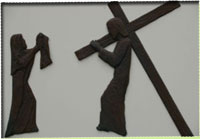
So I need to face myself and ask: ‘Do I really want to forgive him/her?' It's then I ask Jesus to please give me a forgiving heart like His. He becomes strength in my weakness.
Finally, all these sufferings of Jesus, and my own, are given a very special meaning by what some churches have as Station 15 - the Resurrection. This is what gives suffering its meaning and worth.
These Stations were designed and made by prominent Australian sculptor, Hans Knorr (1915-1987).They were originally in St Columban’s College, Hayes Park, North Turramurra, NSW. Hans Knorr was born in Germany and arrived in Australia in 1940.
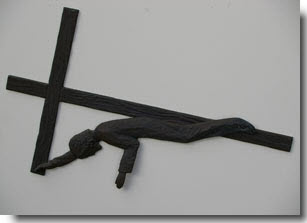
Links To Stations Of The Cross
The traditional 14 Stations of the Cross1. Jesus in the Garden of Gethsemane,
2. Jesus is betrayed by Judas and arrested,
3. Jesus is condemned by the Sanhedrin,
4. Jesus is denied by Peter,
5. Jesus is judged by Pilate,
6. Jesus is scourged and crowned with thorns,
7. Jesus takes up his cross,
8. Jesus is helped by Simon to carry his cross,
9. Jesus meets the women of Jerusalem,
10. Jesus is crucified,
11. Jesus promises his kingdom to the good thief,
12. Jesus entrusts Mary and John to each other,
13. Jesus dies on the cross,
14. Jesus is laid in the tomb.
Holy Trinity Church, Gainesville, Virginia, USA.http://www.holytrinityparish.net/SlideShows/NewChurch/Stations/Stations/html/0.htm
Creighton University. http://onlineministries.creighton.edu/CollaborativeMinistry/stations.html .
This has a link to Audio Stations of the Cross with Mary.http://onlineministries.creighton.edu/CollaborativeMinistry/Lent/Stations-with-Mary.MP3
Stations designed for the internet, with drawings by students from Saint Patrick Catholic School, Onalaska,Wisconsin, USA. http://frpat.com/stations.htm
St Jude Church, Chattanooga, Tennessee, USA. http://www.stjudechattanooga.org/prayer/stations/
Church of the Immaculate Conception, Penang, Malaysia http://www.stjudechattanooga.org/prayer/stations/ from website of artist, Carolyn Gates. http://www.cmgates.com/Stations.htm
There are alternative Stations. http://www.usccb.org/nab/stations.shtml
Our Hideaway

‘Flying-Tsinelas’
By Jeshiene S. Padilla
Jesh is a civil engineering student at Liceo de Cagayan University, Cagayan de Oro City.
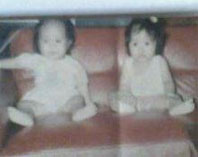 These past few years of my 19 in this world, I’ve learned so many things that I had taken for granted. I had ignored people instead of taking good care of them; I only assumed that they already know how much I valued them. But sometimes it's not enough to keep things unsaid.
These past few years of my 19 in this world, I’ve learned so many things that I had taken for granted. I had ignored people instead of taking good care of them; I only assumed that they already know how much I valued them. But sometimes it's not enough to keep things unsaid. Ever since I was little, I know I've been giving so many headaches to my family. I’ve said words to them that I thought were right, and have done things that have only made things worse. I was like that, never thinking what would happen even if it wasn’t right anymore. Sometimes they didn’t understand me. In spite of that, there's someone I know who is always there for me, who accepts my being different.
She may seem weak when you first see her but she is very strong, especially when it comes to her family. She will do almost anything for the sake of her family. I am blessed because I have been with this someone for years, and spending time together has been really worth every minute. Now that we have been separated for some months, I really can’t imagine spending my day without thinking of her, even worried at times for I’m too far away from her. All I can do is reminisce about the times when we were together.
I can still remember our childhood years, the times when I had to get into a fight just to protect her. She never wanted to fight anyone. She would choose to ignore all the things they’d said or done even if it caused her pain. But I couldn’t stand it! That was why I was the one who always got into a fight even if she was the one involved and not me. But on the other hand, I’m happy because in my own way I protected her.
I miss her. I miss spending my day with her. I miss the arguments that would end with us hurting each other. I miss the slaps, the broken door every time we fought, and most of all I miss the ‘flying-tsinelas’ (editor’s note: ‘tsinilas’ is a rubber slipper or sandal] making its way towards me. In our own language ‘iiyak ang araw kung hindi kami nag-away,’ (the sun would cry if we didn’t fight.) We were like cats and dogs that always fight, yet loving each other in our own way.
I love this someone not because she’s the one who is always there for me, not because she always fixes the things I’ve wrongly done, but because she is my SISTER, my TWIN. And I will love every ‘flying-tsinelas’ coming towards me because I just love being with her and I will never exchange the times that I’m with her to what the world can give. I remember one time when we had a big fight the week before her OJT (on-the-job training), I was planning not to talk to her for a week. But the day after our fight she gave me some cakes from Goldilocks [editor’s note: a popular chain of cake shops in the Philippines) and she said, ‘Peace offering ko sa’yo, ang mahal mo kung magtampo ah’ (‘My peace offering. You’re too expensive when you’re sulking’). I’m not sure how I reacted that day. I was just too happy for what she had done to fix things between us. I really miss her now. And I will wait till her OJT abroad will finish.
Six months is not too long, and I hope God will always be there for her, guide and protect her. Although we are different in our ways, one thing we have in common is that we love each other and we will do everything just to make our family happy.
To my twin sister, I may not have the courage to say this to you personally, but I have always loved and cared for you the best that I could since the day our mother brought us into this world. That was 19 years ago, and still nothing has changed.
I thank God for giving me a twin sister who is always there to guide me. I think He used her to be the instrument to help me become what He wants me to be. I’m just glad it is her.
Pulong Ng Editor
The Agony And The Ecstasy
The author lives in Birmingham, England, with her husband Andrew, a policeman, and their ten children. She used to keep a blog where this article, slightly amended here, first appeared on 8 November last. It appears here with Jackie’s permission.
 November is often a painful time for me. Eight years ago, after the birth of my tenth child, Jacinta, in October 2000, I was plunged into a darkness so deep it was unbelievable. Something went very wrong with my head such that I, ‘super-mom’ of nine couldn't seem to dress the baby with ease. Things reached the point where my mind retreated, leaving a shell.
November is often a painful time for me. Eight years ago, after the birth of my tenth child, Jacinta, in October 2000, I was plunged into a darkness so deep it was unbelievable. Something went very wrong with my head such that I, ‘super-mom’ of nine couldn't seem to dress the baby with ease. Things reached the point where my mind retreated, leaving a shell. Andrew, my husband, took over the complete care of the baby and the other nine children. Our magnificent eldest, Jennifer, was just 13 and helped enormously.
After four weeks I called a doctor. Thus began the strangest thing. She was a convert from New Zealand and the first thing she asked us was if we would like to pray a decade of the rosary with her. I thought to myself ‘there must be a God’. Every visit she made thereafter began with prayer. However my illness was going to be a very lengthy and excruciatingly painful one for everyone. Fr Paul Chavasse, provost (superior) of the Birmingham Oratory and postulator of the cause of Cardinal John Henry Newman, often talks about modern man having a fear of death.
This always touches a nerve because there is a different kind of fear of death and dying. It is a common symptom of a severe, life-threatening and disabling depression. Something happens to the brain's chemicals and all one can think of is death, dying, suffering. It is intensely painful. The pain of severe depression is perhaps not really understood by those who have not experienced it. Prior to this I had no idea what it meant. Surely they could 'pull themselves together'? Anyway how come I, with wonderful friends and family’ had 'depression' since I was extremely happy at delivering a tenth healthy child?
 So began a regime of treatments . . . eight anti-depressants, false days of recovery, only to relapse, terrific weight gain, a cruel side-effect of psychiatric medications, inability to function, becoming bed-ridden . . . the list went on. After a full year they put me on lithium and then I began a slow, arduous, painstaking recovery. I made myself get up, get dressed, exercise . . . but it was ‘automatic’.
So began a regime of treatments . . . eight anti-depressants, false days of recovery, only to relapse, terrific weight gain, a cruel side-effect of psychiatric medications, inability to function, becoming bed-ridden . . . the list went on. After a full year they put me on lithium and then I began a slow, arduous, painstaking recovery. I made myself get up, get dressed, exercise . . . but it was ‘automatic’.Pain, agony, and with severe depression you just go lower and lower and then you are consumed with thoughts of suicide but without any attempt at it, called 'suicidal ideation'. It scared the wits out of me. I asked the doctors why I was thinking of such a thing. It is very common in acute depression. This was enormously frightening to the whole family. By the grace of God alone I never acted on the thoughts or made a suicide attempt but take it from me, don't think that anyone is exempt at some point from doing so. This is why legalized suicide is so terrible.
In 2005 I had another breakdown, having come off my medications and thinking I was over my post-natal depression. I was diagnosed with bi-polar affective disorder. Did I always have this? Perhaps I had always been very high functioning, but had experienced no real depression and certainly no mania. This episode was truly horrific in a different way.
They put me on a drug called ‘risperidone’ and so began a side-effect called 'akathisia'. This is an extremely unpleasant subjective sensation of 'inner' restlessness that manifests itself with an inability to sit still or remain motionless, hence the origin of its name, Greek for ‘without sitting’. It can lead to an almost indescribable sense of terror and doom. In some cases it can be so severe that the patient is literally compelled to take action, leading possibly to suicide attempts. It is often misdiagnosed. The doctors didn't pick mine up situation until I was literally running up and down continuously in front of them. I still have the card one of my daughters made for me with the words, ‘Dear Mom, I hope your legs wear down soon!'
Am I resentful that I endured so much suffering for so long? The psychiatrists were powerless. We were considering ECT (electroconvulsive therapy also known as ‘electroshock’). Psychiatry is basically trial and error - what works for one may not for another. Even Andrew my husband said, 'They wouldn't treat an animal like this'.
This is where the danger comes. Because the suffering is acutely unbearable the patient thinks to himself, ‘I'm causing all this fuss to this poor husband, children, friends . . . you're not getting any better . . . everyone's practically given up on you . . . best take a pill or have an injection’. Truthfully, I would have been first in line. The suicidally depressed person can't even glimpse a future.
I want to say to anyone suffering in a similar way to what I did, even through two or three years of awful agony, that recovery is possible. Writing this in November, the end of autumn and the beginning of winter in England, I feel absolute exhilaration (not mania) at being out in the fresh air, fitter and healthier than I have been for years. For me this is a true miracle. I do as ever thank my husband, family, friends, parish priest and Our Blessed Lord and Our Lady. Prayers at the graveside of the Venerable John Henry Newman also helped greatly. If I can give something back I would like to.
When I was ill I envied the Souls in Purgatory because they knew, though suffering intensely, that they were saved, whereas in the depth of despair and darkness of the depressed person there is no such assurance. I truly panicked that in my despair I had sinned against the Holy Spirit. But it was an 'illness' which made me think that euthanasia was a great idea. I can see clearly why we must fight against the evil of legalized euthanasia because I would have been dead long ago if there had been such in force.
I am more fulfilled with my life now than I have ever been. I almost feel a glimpse of heaven at times. My particularly faithful saint is St Padre Pio who had a great devotion to the Holy Souls. I know in the future I will have my share of sufferings. I do however plead to the Lord never to have a breakdown again. Whatever God wills.
Who gets depressed?
· Depression is very common. (My priest told me 'It's more common than you think!')· Between five and ten per cent of the population are suffering from the illness to some extent at any one time.
· Over a lifetime you have a 20 per cent, or one in five, chance of having an episode of depression.
· Women are twice as likely to get depression as men.
· Bipolar affective disorder is less common than depressive illness with a life-time risk of around one to two per cent. Men and women are equally affected.
You may email Mrs Parkes at rosary@blueyonder.co.uk
The Little Way
By Fr Liam Dunne SVD
The author remembers the founder of ‘The Little Way’ - Mary Doohan, who died on 29 August. The article, with additional material from Columban Father Michael Doohan, brother of Mary, is used with permission of The Word, www.theword.ie. Fr Michael Doohan has been in Negros since 1953. His older brother, Father John, who is very ill at the time of writing, went to Mindanao in 1948 and was transferred to the new mission in Negros in 1950 where he worked for the next 50 or so before ill-health forced him to retire to Manila. Catholics reading The Universe or The Irish Catholic will, undoubtedly, over the years, have noticed an advertisement for a charity called ‘The Little Way’. It regularly seeks donations for various outreach projects, such as the recent ‘Little Way Burma cyclone Appeal’. At other times it seeks funds to help Christians in the developing world who haven’t the means with which to build a church, or who can’t afford the cost of a training program for seminarians.
Catholics reading The Universe or The Irish Catholic will, undoubtedly, over the years, have noticed an advertisement for a charity called ‘The Little Way’. It regularly seeks donations for various outreach projects, such as the recent ‘Little Way Burma cyclone Appeal’. At other times it seeks funds to help Christians in the developing world who haven’t the means with which to build a church, or who can’t afford the cost of a training program for seminarians.What is The Little Way? Where did it come from?
Mary Doohan was born in 1917 in a place known as ‘The Hand’ in the parish of Mullagh, Co Clare, Ireland. She was one of nine children born to Timothy and Hannah Doohan. Two of the children – John and Michael – became Columban priests. Father John came to the Philippines in 1948 and after a short spell in Mindanao was one of the Columban pioneers in Negros Occidental in 1950 where Father Michael followed him three years later. One of the girls, Philomena, became Sr Gabriel Perboyre, a Columban Sister, and spent her early years as a Sister in Burma. When the Sisters were forced to leave there she came to the Philippines where she spent seven years before going to Chile for twelve years.
Growing up in Co Clare, Mary, like most Irish Catholics, would have been acquainted with the life of the ‘Little Flower’ – St Thérèse of Lisieux, whose cause for canonization was to the fore at the time. The young French Carmelite nun’s ‘Little Way’ of holiness – of trusting in Jesus to make her holy and relying on small daily sacrifices instead of great deeds – appealed to those who were trying to find holiness in ordinary lives. Her example inspired many lay people to try to do the same. Mary was also actively involved in the Legion of Mary.
Like many Irish people before and since, Mary was forced by economic circumstances to emigrate from her beloved Co Clare. She went to London to do nursing but her work was merely scrubbing floors. After some months, Mary decided that this was not what she wanted. She resigned and applied in several places for office work. One day a beggar approached her. Mary had only enough for her bus fare in her pocket. She gave it all to the beggar and walked home. When she arrived there was a letter waiting for her telling her to report for work to the London Civil Service. In the meantime, her brothers and her sister had also left home for the Far East. While living in London, Mary became interested in the Columbans, whose developments she followed thanks to the reports she received from her sister and brothers.
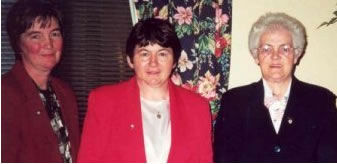
Early in his career in Negros, her brother John wrote to her that his church had been destroyed by a typhoon. Mary felt for him, especially as he was new in Negros. She went to the parish priest of St Scholastica’s Clapton, Father Lieveritz, and asked what could be done to help. He suggested that Mary get a projector and film and show it in the parish hall. He announced it on Sunday. Mary was encouraged with the results and went from parish to parish every weekend showing the film. Some people eventually helped her.
That was the beginning of the Little Way. Requests came from other missionaries and eventually the little group was organized under the patronage of St Thérèse of Lisieux, Patroness of the Missions. Mary was ahead of her time in organizing the laity to take an active role in the Church. The group got ecclesiastical approval in 1960 and in 1964 became a registered charity in the Archdiocese of Southwark, located in south London. To this day the charity continues to help missionaries all over the world.
The Little Way is not merely for fundraising. It is also for mission promotion and prayer. Mass is celebrated daily in their chapel, followed by exposition of the Blessed Sacrament and the saying of the holy rosary and other prayers for the Church and the missions.
The Little Way Association has expanded and grown over the years. It is currently giving help in 76 countries. They help only the very poor, and especially abandoned and abused children, orphans, and aged homeless people. They help seminarians and catechists and give grants for small chapels and wells in remote areas. They also help the victims of war and natural disasters.
Mary and the Little Way Association have touched the lives of hundreds of thousands of people.
In recognition of her work and of the work of the Association, Mary was twice honored by the Church. In 1979 she was awarded the Pro Ecclesia et Pontifice medal. In 1996 Pope John Paul II awarded her the ‘Damehood of St Gregory the Great for her work for the missions’.
Together with Bishop Nicholas Mang Thang of the Diocese of Hakha in Myanmar (Burma), Mary co-founded the Little Way Sisters of St Thérèse, who now number more than 200, and the Little Way Missionary Priests of St Thérèse. The first group of these seminarians will be ordained in March.
Mary died on 29 August, aged 91. After her funeral in London she was taken home to her beloved Co Clare where she was laid to rest in the family grave. May she rejoice at meeting her Risen Lord.
Without any doubt, Mary Doohan was one of that unique group of Irish missionaries, such as Frank Duff, founder of the Legion of Mary, Edel Quinn and Alfie Lambe, two envoys of the Legion of Mary who died young in Kenya and Argentina respectively, Mother Mary Martin, foundress of the Medical Missionaries of Mary, Bishop Joseph Shanahan CSSp, founder of the Missionary Sisters of the Holy Rosary, Fr Patrick Peyton CSC, the ‘Rosary Priest’, Fr Patrick Whitney, founder of St Patrick’s Missionary Society, Fr Edward J. Galvin and Fr John Blowick, co-founders of the Columbans, who have set an example for the Irish Church – missionaries and lay people alike – who have shown that one person can make a difference and that a collective effort and hard work can achieve great things for God.
Further Information
Here are links for information on the persons and groups mentioned in the closing paragraph.Legion of Mary: http://www.legion-of-mary.ie/ (Legion HQ)http://legion-of-mary-ny.home.att.net/index.htm (New York Senatus)
Frank Duff: http://legion-of-mary-ny.home.att.net/Frank_Duff.htm
Alfie Lamb: http://legion-of-mary-ny.home.att.net/alfie_lambe.htm
Edel Quinn: http://legion-of-mary-ny.home.att.net/Edel_Quinn.htm
Medical Missionaries of Mary: http://www.medical-missionaries.com/
Mother Mary Martin: http://www.mmmworldwide.org/index.php?article=MMM_and_the_Benedictine_Way_of_Life
Bishop Joseph Shanahan CSSp and the Holy Rosary Sisters:http://www.holyrosarymissionarysisters.org/inspiration/history.html
Fr Patrick Peyton CSC: http://www.familyrosary.org/main/about-father.php
Monsignor Patrick Whitney and St Patrick’s Missionary Society:http://www.spms.org/stpatricksmissionarysociety/Main/History.htm
Fr Edward Galvin and Fr John Blowick, Founders of the Columbans: http://www.columban.org.au/about-us/our-founders.html
+++
Little Way Group, Kabankalan: http://kabankalanmission.blogspot.com/2008/07/little-way-group-established-in.html
Obituaries: http://www.rcsouthwark.co.uk/mary_doohan.htmlhttp://www.catholicherald.co.uk/articles/a0000365.shtml
Pro Ecclesia et Pontifice (‘for Church and Pope’) was instituted by Pope Leo XIII in 1888 on the occasion of the Golden Jubilee of his priesthood. It is now given to lay people and priests in recognition outstanding service to the Church. It is the highest medal that can be given a lay person. Fr Michael and Fr Patrick Hurley received this honor about two years ago in what was a recognition not only of their many years of service in what is now the Diocese of Kabankalan but of the service of all Columbans who had been there down the years.The Pontifical Equestrian Order of St Gregory the Great was instituted by Pope Gregory XVI in 1831 to honor those who ‘have promoted the interests of society, the Church and the Holy See’. The only privilege members of the order have is the right to ride a horse in St Peter’s Basilica – aright that no one has exercised for a long time!
To Search is to Find

Is it okay to stop my rosary in the middle and then just continue with it later? Last night I was praying the rosary but I started dozing off. So I stopped, busied myself with some paperwork, and then went back to my rosary. As a child my Lola told me the rosary, once halted, loses its meaning.
Why do many parents read bed-time stories to their children or sing lullabies? Isn’t it to help them fall restfully asleep so that they’ll waken up refreshed next morning? What better way to fall asleep than reflecting on the life of Jesus Christ, which is what the rosary is!
My late father, after the death of my mother, used to fall asleep praying the rosary. One of the graces of the rosary is that we can divide it up, praying one mystery at a time. We can spread the five mysteries over the day. I’m sure your Lola was very close to our Blessed Mother and her Divine Son, but any prayer from the heart retains its meaning, even if we fall asleep. Did your Lola cease to love you when you were asleep?
Helpful Website
Rosary Center, How to pray the rosary http://www.rosary-center.org/rosary.htm
What’s On Their Mind
By Sr Anne Carbon SSC
Sister Anne, a psychiatric nurse by profession, is a Columban Sister form Cagayan de Oro. Misyon has featured a number of her articles about her missionary work in Peru.

On 10 October 2008, World Mental Health Day, the Commission on Mental Health of Ayacucho celebrated its fifth anniversary. Looking back on those five years, I cannot but thank God for the many advances that have made it possible for us to initiate and carry forward different programs at our clinic.
The Ayacucho Mental Health clinic represents an effort to address the striking absence of mental healthcare in rural areas of the less–developed world. According to a recent report of the World Health Organization (WHO), between 76.3% and 85.4% of the seriously mentally ill in developing countries had received no treatment in the twelve months prior to its survey. In another document WHO reported that the majority of the world’s 450 million suffering from neuropsychiatric disorders live in developing countries and that fewer than ten percent have access to psychiatric treatment.
The mountainous farming region of southern Peru where people tend small plots of land or herd alpacas and sheep was the epicentre of brutal violence between Maoist insurgents and the military in the 1980s and early 1990s. The Truth and Reconciliation Commission set up in 2001 estimated that 69,000 people died in the violence. Most were poor, Quechua-speaking peasant farmers in Ayacucho and neighbouring regions.
The survivors have been left to deal with having witnessed the murder of spouses, parents, children and neighbors, seeing their farms and belongings burned, or searching fruitlessly for loved ones taken away by soldiers or Maoist insurgents.
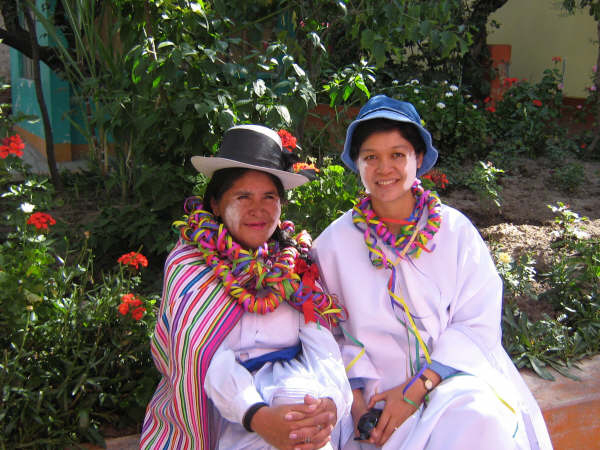
The Commission on Truth and Reconciliation recommended that education and mental health care be provided to people affected by the violence, and it took up the cause later in 2003.
The Clinic
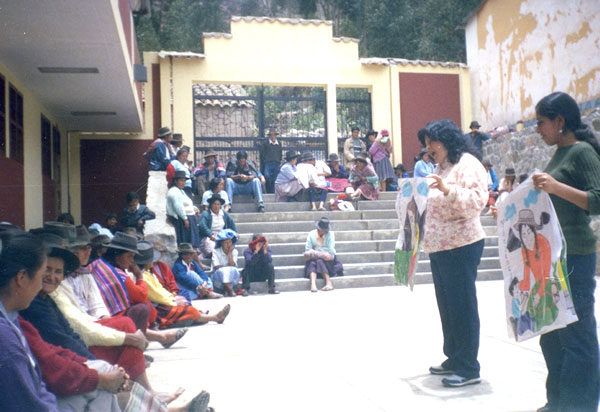
After spending a year working in Instituto Especializado de Salud Mental ‘Honorio Delgado-Hideyo Noguchi’, Noguchi Psychiatric Hospital, in Lima, I opened a psychiatric clinic in Ayacucho in October 2003. This was done in coordination with local religious and lay groups. We began with minimal supplies, a volunteer nursing staff and a volunteer psychiatrist from Lima.
The clinic provides a mental health service to an area of the Peruvian Andes that, like most of the rural developing world, has never had access to such. The clinic, operated in a non-denominational manner, is supported by volunteer psychiatrists from Lima and US psychiatrists associated with the Peruvian-American Medical Society, which also provides technical and some financial support. The clinic serves more than 2,000 patients in Ayacucho and neighboring provinces, providing psychiatric evaluation, treatment and rehabilitation. Treatment includes pharmacology, individual and group psychotherapy, an alcohol- and substance-abuse program, a program for mentally-challenged children and adolescents.
A schizophrenic rehabilitation program includes individual, group, family and multifamily therapy sessions, occupational training and other activities, including weaving, manual work, jewellery-making, carpentry and computer training. The aim is to help the participants recover capabilities that they have lost and reinsert themselves in society. Every small step forward by a patient is a cause for celebration.
Within the city of Huamanga, we serve individuals who are able to come to the clinic, as well as residents of the local nursing home, the orphanage and the prison. We also make home visits to mentally ill individuals who are unable to come to the clinic.
When a new patient arrives, a team member visits the person`s home and talks with family members to gain their commitment to help and support him or her. This is a condition for treatment. We don’t have a place for patients to stay. Eighty percent of recovery depends on the family, ten percent on the rehabilitation and ten percent on medication.
However, relatives are often the first to deny there`s a problem. Acute cases sometimes require hospitalization. But the local hospital, where a psychiatric ward is still on the drawing board, often turns patients away or insists that a nurse from the Commission stay with the patient overnight. While this puts one more demand on an already overburdened team, the young nurses, all of whom speak Quechua, are from Ayacucho, and were children when the political violence was at its peak, take it in stride.
Some of the people who seek help have been wandering the streets of Ayacucho. A few have been brought by bus from distant villages by family members who tied or chained their hands and feet to control them during the trip. Most people would be afraid of these patients, but not so here at the clinic. We treat them as we would any other human being and restore their functional and social abilities.
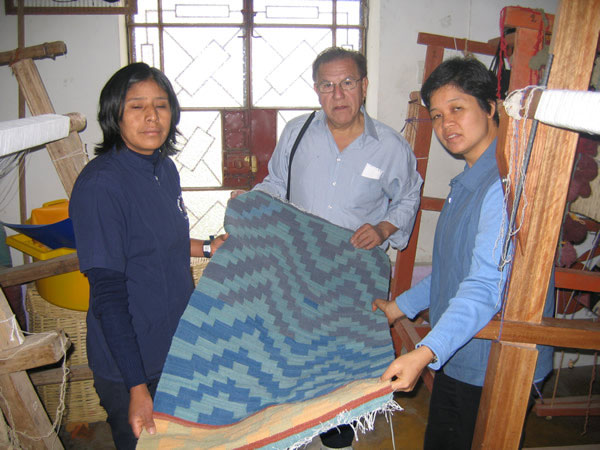
I would like to express my heartfelt gratitude to the many generous people who have helped us all these years. Without your support, we would not be able to achieve and improve the quality of life of many people here in Ayacucho.
You may email Sister Anne at annemusuq@yahoo.com
Where The Poor Get More Than Enough
 God’s ways in how He connects people with each other never fail to amaze me. Every time I discover links and relationships among mankind, I find myself so convinced that we are living in an interconnected world. That amazement and sense of being convinced is the same feeling I experienced when Father Seán Coyle asked me to interview Father Brian Gore to know more about Sister Felicitas B. de Lima DSA who was among the ten people the Coalition of Services of the Elderly (COSE) awarded at St Paul College, Quezon City, on 5 October.
God’s ways in how He connects people with each other never fail to amaze me. Every time I discover links and relationships among mankind, I find myself so convinced that we are living in an interconnected world. That amazement and sense of being convinced is the same feeling I experienced when Father Seán Coyle asked me to interview Father Brian Gore to know more about Sister Felicitas B. de Lima DSA who was among the ten people the Coalition of Services of the Elderly (COSE) awarded at St Paul College, Quezon City, on 5 October. Father Gore knows Sister Felicitas, or Sister ‘Etat’, very well. Sister Etat, the 74-year-old founder of the Daughters of St Augustine, got to know the Columbans sometime in 1990 when Father Gore was doing vocation work in the Bicol Region. Sister Etat had been assigned in Negros before, where the priest has spent many years.
 Since then, Columbans have been visiting the Fatima Center for Human Development which was cited by the COSE in recognition of Sister Etat, often using it as a base for vocations work in the area. The Foundation of Our Lady of Fatima for Human and Development Inc, or Fatima Center, is a charitable institution which Sister Etat co-founded after she completed her studies in social work. Sister Etat still runs the center. It is situated at San Agustin Village, Iriga City, Camarines Sur, part of the Bicol region.
Since then, Columbans have been visiting the Fatima Center for Human Development which was cited by the COSE in recognition of Sister Etat, often using it as a base for vocations work in the area. The Foundation of Our Lady of Fatima for Human and Development Inc, or Fatima Center, is a charitable institution which Sister Etat co-founded after she completed her studies in social work. Sister Etat still runs the center. It is situated at San Agustin Village, Iriga City, Camarines Sur, part of the Bicol region. Since 1974, Fatima Center has been able to implement various programs and services for the improvement in the living conditions of orphans, street children, victims of violence, abandoned children, persons with disabilities, single parents, cultural minorities and disadvantaged children and the general welfare of the poor. Fatima Center provides the basics of life such as food, shelter, education and a loving and safe environment. It has an orphanage for 150 poor children, and a public elementary and high school for the local community, as well as a shelter and services for battered women and indigenous Aeta people. It also has an experimental farm and piggery and, according to Father Gore, the center has nice fish ponds and lots of coconuts.
‘We like going there. They have a very nice atmosphere and well-disciplined kids,’ said Father Gore.
 The center teaches the children the value of work because their requests are only granted after they availed of their ‘passports,’ signifying they have fulfilled their tasks. As a second year social work student, I am always reminded of the heart of the profession which makes it a noble vocation as well: to help people help themselves by not just a mere dole out system but by motivating them to maximize their potentials. Our goal is to enhance the social functioning of those who due to unfavorable and disturbing circumstances are impaired. Fatima Center is a home where people can get back their dignity, learn some skills, increase their self esteem and be guided to become productive members of society. Because of Sister Felicitas’s ideas and efforts, many lives have been given hope. She came from a wealthy family but chose a simple lifestyle and dedicated it for the good of others. She has spent her earthly treasures in the pursuit of living the heart of being a real social worker.
The center teaches the children the value of work because their requests are only granted after they availed of their ‘passports,’ signifying they have fulfilled their tasks. As a second year social work student, I am always reminded of the heart of the profession which makes it a noble vocation as well: to help people help themselves by not just a mere dole out system but by motivating them to maximize their potentials. Our goal is to enhance the social functioning of those who due to unfavorable and disturbing circumstances are impaired. Fatima Center is a home where people can get back their dignity, learn some skills, increase their self esteem and be guided to become productive members of society. Because of Sister Felicitas’s ideas and efforts, many lives have been given hope. She came from a wealthy family but chose a simple lifestyle and dedicated it for the good of others. She has spent her earthly treasures in the pursuit of living the heart of being a real social worker. Urban Poor Associates, an NGO advocating housing and other rights of squatters, nominated Sister Etat for the COSE award. She expressed embarrassment at receiving the award. For her, 54 years of service as a Religious have brought her ‘more than enough’ in return, citing lessons she learned from people she has served. Yet, Sister Etat’s 54 years of service have taught the people she has served lessons which are worth living for. The Columbans who know her have seen realized in her life the essence of education and compassion.
In the irony of all the ironies, even though Sister Etat and I don’t really have that concrete connection, I am still amazed at how God connects one person to another. I am convinced that God Himself has already put that link between us. Hence, I’ve learned from her the exact example of true service to the people, to the nation and to God. I have learned from her the deeper meaning of my university course.
Who Will Console Consuelo?
By Sr Angela McKeever SSC
A few days before Christmas I went to visit the women prisoners in the local jail. Usually there are 25 or more in the punishment cells but, possibly because of the season, only seven were incarcerated that particular day. The charges against them are mostly of drug and alcohol abuse, and fighting. Their faces are familiar to me and most of them responded to my greeting.

Not so Consuelo. Hands on her hips, she stood and stared at me aggressively. ‘I don’t believe in God; I have nothing to say to you.’ In other words, go away and leave me alone. ‘Well,’ I said, ‘If you do not believe in God, why are you wearing a rosary and a scapular?"
Furious now, she said, "Someone gave them to me, that’s why." And having started, she went on loudly: ‘How do you think I could believe in God? From the time I was a small child my father beat us, drank all the money he earned, never gave us a thing and finally, abandoned us.
‘How do you think I could believe in God? My mother also drank and fought all the time with my father. From the time I was four years old I was out in the streets begging and stealing so as to have food and clothes. No one cared a jot for us.

‘How do you think I could believe in God when my own mother shot herself dead in front of me when I was 11 years old?
‘How do you think I could believe in God when my five brothers and myself are in and out of jails all our lives. Right now all of us are in different jails in Santiago and outside it. Don’t talk to me about God,’ she ended bitterly. She was shaking from the effort of venting her anger.
Her pain at the injustices she suffered was like an iron bar beating her and beating anyone who tried to reach her. No words of mine would mean anything to her. If only I could hold her in a silent embrace, help her to feel that she was precious, valued. But an iron gate was between us. I reached through the bars and held her trembling arm.
Just then a woman from another cell was going out to wash. ‘Madre,’ she said, ‘give me one of the papers you gave to the others. I would like something to read.’ It was a reflection on Jesus and how we might draw closer to him. Some psalms and prayers were given to help the reader.

‘Give me one too,’ Consuelo said, and I gladly handed a leaflet to her. I hoped and prayed she would find it a help in her suffering, that she would be able to open her heart and let the Lord in to heal her many hurts.
‘Maybe we can talk about this when you go back to your section of the prison,’ I said. But she did not answer. She did not know what section of the jail they would send her to as she had had problems with the other prisoners.
Maybe I will lose her amid the 1,300 women in this jail. But I know God will not.
‘THANK YOU’ FROM CARLOS
Before Carlos was released from the men’s prison he asked Sister Angela to thank people who helped him and got a friend to translate his letter from Spanish.
Hi!
My name is Carlos Triana. I am from Colombia and I have been here for more than six years in Chilean jails. It has been a long hard journey but I can see now a lot of positive things that happened to me since my arrest.
I am 44 years old and for the first time in my life I can look at a clear horizon and know what I want and what I can do. This is thanks to the many benefactors doing good for us and especially for the constant support of Sister Angela McKeever. I met her at the beginning of my reclusion. She has been for me and my mates a person full of kindness and understanding. I say this because it is not only financial support but also spiritual and emotional support.
For all these years I and my mates established different workshops. For example we helped the blind by making abacus, books in Braille, sticks and so on. We also manufactured teaching toys for different foundations.
The workshop is in Colina 1 and I am there with my mates from Chile and Argentina. I am now in a section where we are working on a new project with photographs, printers and pieces of copper. In here, with your support, I learned new jobs that in the future will be my own support. I will be able to get tools and keep going ahead.
I have faith in God that I am going to have the peace that I’ve been searching for in my life. The most important is to get essential love and respect for my fellow creatures, love for my family and for myself.
Once again, in my name and in the name of my mates, I want to give our endless gratitude to all the benefactors who help the Columban Sisters and give us a new opportunity to reintegrate by the right way in society. And our families are also thankful.
I have a new future, very different from what I had when I came to jail.
God be with you and protect you.
Forever grateful,
Carlos Triana Rodriguez
Sr Angela McKeever has been in Chile since 1976. You may write her at: Casilla 311, SANTIAGO 22, CHILE.
Your Turn

Our letter sender for this issue is an active member of our Misyon forum www.misyononline.com/misyonforum . Her parents used to work full-time for the Columbans and are supporting Misyon up till today. Lucille, at present, is a faculty member of Colegio San Agustin-Bacolod.
Dear Father Coyle,
I am an avid reader of Misyon, probably because my mother used to be a promoter. But since it’s now available online, I have free access to it and an article a week is a good medium for reflection. Misyon seems to highlight the lives of modern-day heroes in their own simple yet extraordinary ways.
In the January-February 2009 issue, the article of Corazon Mendoza was very interesting and relevant to me, as I can relate to it as
a parishioner, as a child and as a teacher.
The title of her story 25 Cents from the Poor to the Poorest of the Poor reminds me of the Church’s teaching that ‘No one is so poor that s/he cannot give.’ Certainly, her students have their actual experience of this. Their act of giving to the needy will surely redound to the benefit of the wider community they belong to, especially to the Church. Indeed, everyone is a gift to the Church. Services, presence and contributions in whatever amount can go a long way when shared in cheerfulness and love. While reading her article, I remembered my mother letting her pupils place some amount in Columban ‘love-boxes’ before.
Since my mother taught in a public school, most students could hardly go to school with baon (editor’s note: ‘baon’ means a packed lunch/snack or the money to buy some food) but because of the motivation to love missionaries, they managed to give. Our parents have nurtured us to be generous, especially to those who have less than we have. They would always stress that even if we are poor, others are more miserable than we are and as a thanksgiving to God, we have to cheerfully share with them what we can. I believe the reason why all of us are active in the Church is because we have followed the footsteps of our parents. From them, we continue to render services to the Church without gaining recognition, remuneration or favor from priests. God has rewarded us more than we had asked for… to Him be the glory.
After reading Corazon’s article, I asked myself, ‘In what way have I opened the hearts of my students in generosity to the poor?’ Then I recalled my active participation in our school’s outreach program. During the Jubilee Celebration of the Diocese of Bacolod, we invited our partner community to join us on pilgrimage. Our theme was, ‘Colegio San Agustin-Bacolod and
Partner Community: Moving Forward Together’. The teachers, with some students and the children (who were our florestas that time) of our adopted purok, celebrated together. We had emphasized to the florestas that even though they are poor, there are still others who need more than they do. This gave further meaning to our activity because we went to Bacolod Girls’ Home where the florestas were so happy to share their snacks with the orphans there.
This was the concrete expression of being blessed by the Jubilee: that they were able to give despite their own inadequacy. They had deprived themselves of snacks so that others might share. Later, we asked them which part of the Jubilee was most memorable for them. Their answer was unanimous: their experience at the Girls’ Home. For us teachers, we were happy that our lack of budget had been a blessing because we had taught our children to give what they had to others in greater need.
Stories in Misyon seem to imply this to the readers: This person has done this for God and for others, what about you? May
we have the courage, humility and openness to follow God’s mission for us, wherever we are, in all circumstances. Amen.
All the best,
Lucille Arcedas